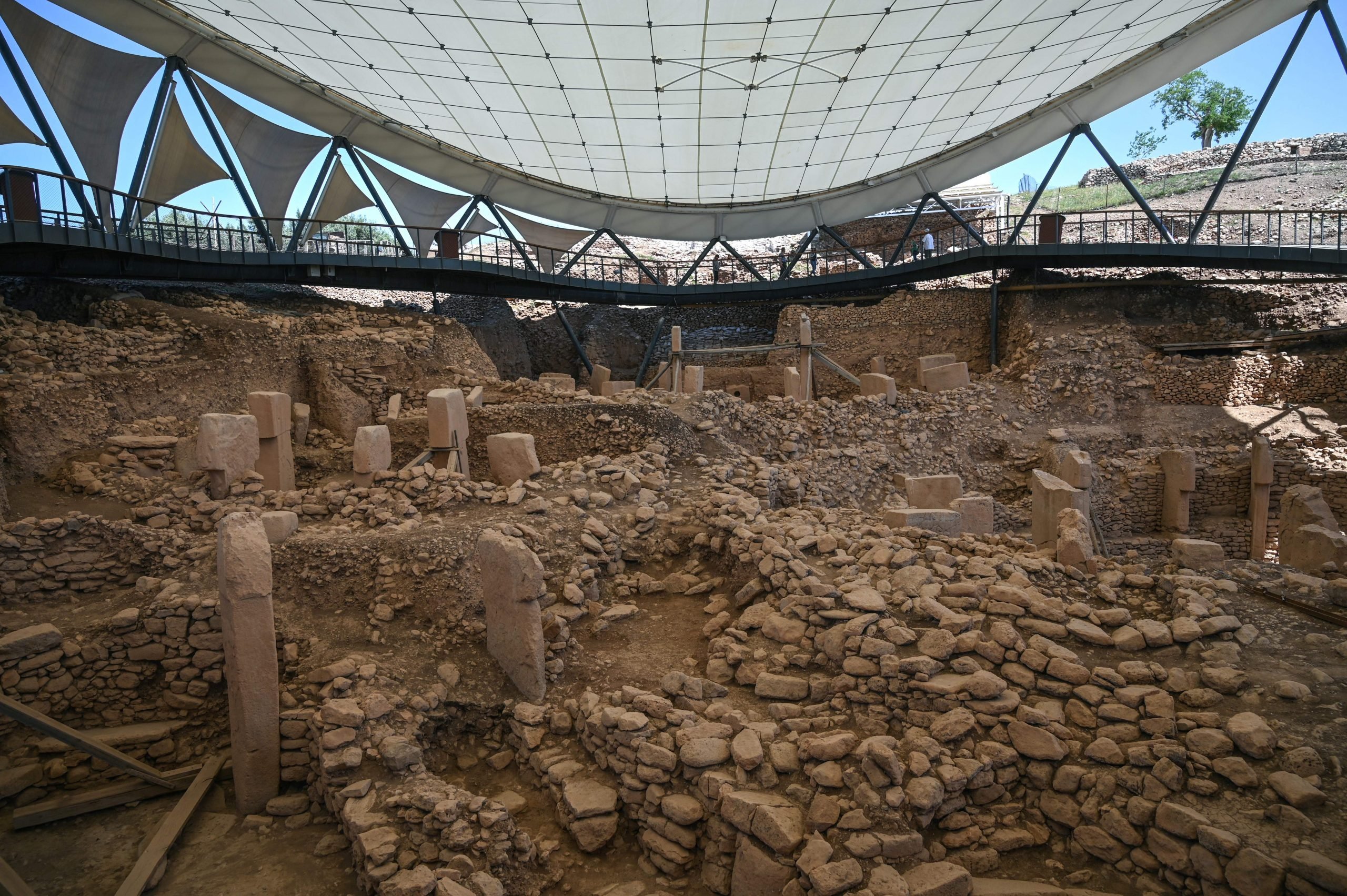
Archaeologists have long pondered the purpose of Göbekli Tepe, seven hectares of 11,000 year old ruins in Southern Türkiye. Its intricate carvings have proven equally enigmatic. But, a new study by Edinburgh-based Dr. Martin Sweatman takes the bold stance that these carvings record the stars—and that Göbekli Tepe was perhaps the earliest lunisolar calendar. Amongst its many implications, Sweatman’s conclusion may help clarify the origins of the Neolithic Revolution (10,000 B.C.E.–2,200 B.C.E.), which set the foundations for society.
Although these ruins first emerged in the 1960s, excavations began in 1994, and remain ongoing. Göbekli Tepe’s largest complete space—Enclosure D—is also its oldest, radiocarbon dated to 9,530 (B.C.E.). Older chambers may still be discovered. First thought to be a cultic center, new finds have already alluded that Göbekli Tepe was a settlement as well. It might even date to the Younger Dryas, a mini ice age just before the Neolithic Revolution.
Sweatman is pioneering an archaeoastronomical approach to the site. In 2017, he published a study with Dr. Dimitrios Tsikritsis using comparative cultural research to interpret the animals on Pillars 33, and 43—both in ‘Enclosure D’—not as evidence of shamanism or some skull cult, as has been the norm, but as the predecessors of Greek constellations, which would have been used to record dates, since the dominant constellations of the solstices and equinoxes shift with time from the earth’s wobbling. Prehistoric people depended on understanding the sky. Based on their efforts, Sweatman’s 2017 paper proposed that Pillar 43 is a monument to the hypothetical Younger Dryas Impact, a comet that may have struck earth around 10,835 B.C.E.—which some scientists think caused the Younger Dryas.
Close up of the carvings on Pillar 43. Courtesy of Dr. Martin Sweatman
“Archaeologists working at the site did not receive the idea well,” Sweatman recalled over email. His peers have resisted assessing sites like Göbekli Tepe through the lens of the sky. “Archaeoastronomy is not taught, to my knowledge, as a component of any archaeology degree,” he wrote. “Consequently, some archaeologists don’t even seem to understand the difference between astronomy and astrology.”
While Sweatman had already deduced that the animals on Göbekli Tepe represented constellations, the v-shapes and boxes on Pillar 43 still vexed him.
“In 2021 I was contacted by Dr. John Gordon,” Sweatman continued, “who showed me that a lunar cycle was encoded by a line of V-symbols on Pillar 43. I immediately saw how to extend this insight to decode a whole solar calendar that incorporated the lunar cycle and which dovetailed perfectly with our previous interpretation. Essentially, both interpretations lead to the same conclusion, which is that the bird-of-prey on Pillar 43 represented the summer solstice,” he said—of a year consistent with the purported Younger Dryas Impact. Sweatman thinks the avian figure around the v-mark signifies it’s a special day.
A diagram decoding the carvings on Pillar 43. Courtesy of Dr. Martin Sweatman
By applying his symbolic language to Pillar 33, which features snakes shooting from birds and foxes, Sweatman posited that its scene records the 27-day Taurid meteor stream, the likely Younger Dryas impact.
But, the Younger Dryas didn’t create civilization alone. It’s believed that a collective cognitive shift towards religion, symbolism, and community set that stage. The Younger Dryas impact maybe gave humanity a seminal religion, and warranted meticulous memorialization.